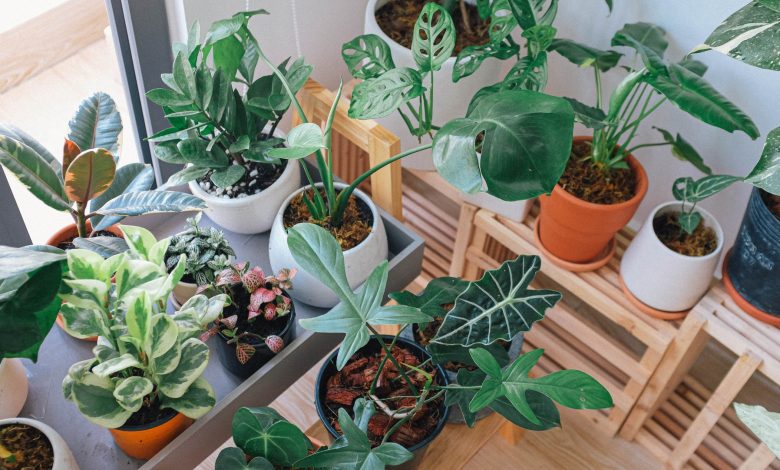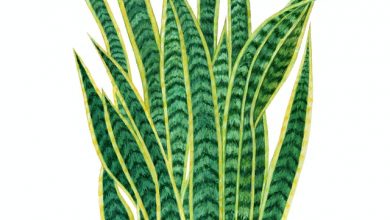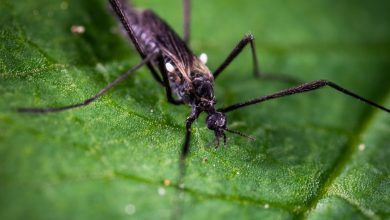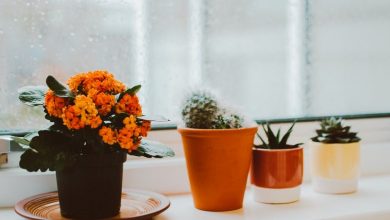Growing Plants Indoors With Artificial Sunlight

Growing plants indoors might seem quite odd, evidently because it’s a deviation from the typical plant growing process. Granted, in cases like these where natural is substituted for artificial, skepticisms arise. Does the process of growing plants with artificial lights work? How effective is it? Will the plants turn out fine? Read on to discover the answers to these questions.
Growing plants indoors isn’t brain surgery and can be done by any random Joe, as long as the requirements and conditions for growth are available. Plants, like other living things, need sunlight to thrive. However, unlike animals, plants don’t require Vitamin D derived from the sun for growth. The implication of this is that plants don’t necessarily need sunlight to grow. As long as there’s an alternative source of light, plants will thrive. However, it’s vital to note that plants absorb specific wavelengths, and the sun supplies these in balanced proportions than a light bulb can. Notwithstanding, the correct lighting fixtures, positioned and spaced adequately, can deliver the same wavelength requirements.
So whether you’re trying to grow an indoor herb garden or nurture flowering plants for indoor aesthetics, it’s easy once you can regulate the following five elements:
- Water
- Temperature
- Light
- Humidity
- Air
With the appropriate lighting system, you can control the elements mentioned above, particularly the temperature and humidity.

A Brief Look at the Mechanism by Which Plants Grow
If you’re looking to grow plants indoors, you must be familiar with how plants grow and produce fruits. This way, you can at least know what to do should the plants not turn out fine.
Plants take in sunlight and air (carbon dioxide) through tiny holes called chloroplasts. When plants absorb sunlight and air, the chlorophyll, which is the green pigment you see in leaves, becomes activated and energized, causing glucose production. But that’s not all. Plants need water and nutrients soaked up through the roots to produce glucose. So it’s more like a combination of all factors: water and nutrients from the roots, sunlight, and air from the chloroplasts, and energy (glucose) from the chlorophyll. In essence, once these factors are available, you’re guaranteed to grow healthy plants in your home.
But one last element remains for optimum plant growth, and that’s the temperature that determines humidity, which means that the higher the temperature, the lower the humidity and vice versa. Quite often, many gardeners have scorched plants during the artificial growing process, because they paid little regard to the heat emitted from the lighting system.

Types of Grow Lights
Perhaps, at this point, you’re wondering if it’s okay to use standard lights to grow plants at home. The answer is NO. Plants need lights that emit particular wavelengths to ensure growth, and regular lights emit none of these wavelengths.
Generally, there are four types of grow lights commonly used.
- HID (High-Intensity-Discharge) grow light
- Fluorescent lights
- LED (Light-Emitting-Diode) light
- Induction lights
HID Grow Lights
Arguably, the commonest grow lights used, these lights deliver a high-intensity discharge favorable for plant growth. HID lights have tubes that contain metal salts and gas, which brightly shine when powered. Now, when replacing the fluorescent grow lights, HID lights are increasingly available and affordable. Some types of HID lights include ceramic metal halide, HPS (high-pressure sodium), and metal halide. Many gardeners like to start a plant’s early growth stage with metal halides and switch to HPS grow light during the flowering stage.
HID lights are especially useful if you intend to grow lots of tropical plants indoors. The ideal growing area will be three-by-three feet for a 250-watt bulb or eight-by-eight feet for a 100-watt bulb. Because the heat from HID grow lights can scorch plants if too intense, you’ll need to be particular about creating the right temperature. To ascertain if the temperature is right, place your hand on top of your plants. If you find that it’s somewhat hot, then it’s too hot for plants that spend several hours under the lights. Also, keep in mind that plants will increase in height, and you should adjust the distance of the bulbs accordingly.
Advantages of Using HID Lights
- They emit massive amounts of heat and are therefore suitable for growing lots of plants indoors
- You can interchange the light bulbs and don’t need to buy new lighting fixtures
Disadvantages of Using HID Lights
- They release heat that can be too intense and kill off plants
- The bulb’s efficiency diminishes with age
- They require ballasts for installation
Fluorescent Grow Lights
Fluorescent lights were the most common indoor lights used for plant growth before the advent of the HID and LED bulbs. The lights release ultraviolet photons in the form of visible lights when electricity charges the mercury vapor in the bulbs.
Advantages of Fluorescent Lights
- They’re very energy efficient compared to other bulbs
- They last longer than other lights
- They’re easy to set up and run
Disadvantages of Fluorescent Lights
- Their efficiency in promoting plant growth and flowering is below par when compared to other lights such as HID or LED
LED Grow Lights
Another type of grow light commonly preferred for its inexpensive running costs is the LED light. The bulbs give a relatively low heat and drastically reduce the possibility of scorching plants. When buying an LED grow light, try to stick with a reputable brand, as there are several knock-offs out there that may not guarantee a good job.
Advantages of LED Lights
- Energy efficiency
- Doesn’t emit too much heat
- Emits a wide range of color spectra
Disadvantages of LED Lights
- Expensive to set up
- Needs reflectors
- Requires different bulbs for different plant phases
If you’re growing plants with lots of green leaves, you might want to consider LED lights with wavelengths of 460 nanometers. For flowering plants, bulbs that emit red wavelengths of 660 nanometers work best.
Induction Grow Lights
Induction lights are more like improved versions of fluorescent lights, the only difference being that they’re activated through an electromagnetic field. They’re specially built for industrial use and aren’t fit for home use.
Advantages of Induction Lights
- Far more efficient than fluorescent lighting
- Extremely durable and can last for thousands of hours
Disadvantages of Induction Lights
- Can be very noisy and not suitable for home use
- The electromagnetic field can affect Wi-Fi and cell signal
So after knowing the different types of grow lights, which is the best? The bottom line here is that there are no one-size-fits-all grow lights. Choosing a grow light depends on the type of plants you’re growing and your budget for setting up and running.

What Should Be the Ideal Distance Between Grow Lights and Plants?
There are no hard-and-fast rules when it comes to determining the exact distance between grow lights and plants. It all boils down to the kind of grow light and the growth stage of the plants. For example, it’s common practice to place LED lights within 12 to 30 inches of fully grown plants. However, during the seedling phase, plants need more light for growth, and as such, you should place LED lights as close as six to eight inches to the plants. However, with HID lights that emit lots of heat, consider setting the plants about three to four feet away to prevent scalding. Notwithstanding, make sure you don’t position the lights too far away so that the rays reaching the plants become minimal and insufficient.
How Long Should Grow Lights Stay On?
Naturally, outdoor plants get about 13 to 14 hours of sunlight each day. As a rule of thumb, consider allowing at least eight hours of darkness per day. Still, it’s worth noting that sometimes, in a bid to expedite the growth process, gardeners let plants experience 24 hours of light during the vegetative growth stage. Later on, after achieving the desired result, the light duration is cut back to the regular hours during the flowering stage. You can use a timer to regulate the amount of light exposure your plants get every day. Depending on the type of plants you’re growing, you’ll need to research the ideal length of time required for light exposure.
You’ll also need a measuring instrument to assess how much light your plants are receiving. There are several light-measuring instruments out there, but the best-recommended device is a PAR meter. With the PAR meter, you can measure the exact amount of useable light a plant needs.
For example, to grow lettuce at home, you need to expose it to a DUI (Daily Light Integral) of about 14 to 16 moles per square meter every day. Only a PAR meter can successfully help you measure this DUI.
Some Final Things to Consider When Growing Plants
Avoid Overheating
The need to avoid overheating can’t be overemphasized. You need to make sure you’re not scorching your plants. Use a thermometer to keep constant measurement of the heat in the room. The first sign of overheating is curled leaves. If you detect signs of overheating, you should either distance the light from the plants or install a cooling appliance.
Avoid Overwatering Your Plants
Many gardeners sometimes mistake watering indoor plants with the same frequency as outdoor plants, which may lead to overwatering. Overwatering causes the soil to be soggy, which may prevent plants from thriving properly. So how often should you water your indoor plant? It all depends on the temperature, which further depends on the type of grow lights you’re using. You’ll know if you’re watering too much when the soil remains soppy for a long time after watering.
Rotate Your Plants Frequently
Many gardeners endorse the process of rotating indoor plants once every week so that lights can penetrate every part of the plant. This process is especially crucial if your lighting fixture isn’t directly overhead your plants.



